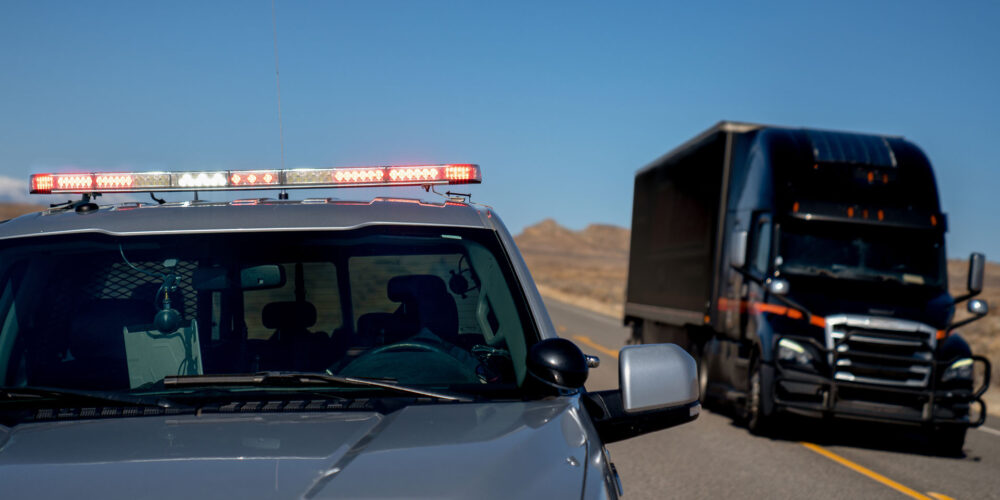 Ensuring safety on the roads is a paramount concern for the Federal Motor Carrier Safety Administration (FMCSA). In an effort to assess the preventability of certain crashes, the FMCSA implemented the Crash Preventability Determination Program (CPDP). The program allows motor carriers and drivers to submit Requests for Data Review through the FMCSA data correction system known as DataQ. In this blog post, we will explore the history, eligibility criteria and submission process of the CPDP.
Ensuring safety on the roads is a paramount concern for the Federal Motor Carrier Safety Administration (FMCSA). In an effort to assess the preventability of certain crashes, the FMCSA implemented the Crash Preventability Determination Program (CPDP). The program allows motor carriers and drivers to submit Requests for Data Review through the FMCSA data correction system known as DataQ. In this blog post, we will explore the history, eligibility criteria and submission process of the CPDP.
History of the CPDP
In July 2017, the FMCSA introduced the Crash Preventability Demonstration Program to evaluate the preventability of eight categories of crashes. This initial program aimed to gather data and accurately assess the feasibility of determining crash preventability. Based on the experiences and feedback, the FMCSA proposed a new CPDP in August 2019, featuring a streamlined process. After considering public comments, the FMCSA established the CPDP with modifications to the Safety Measurement System and the Pre-Employment Screening Program (PSP).
Eligible Crashes for Review
Not all crashes are eligible for review under the CPDP. The program focuses on specific crash types that meet the FMCSA’s criteria. The following crash types are eligible for participation in the program:
- Struck in the Rear: When the commercial motor vehicle (CMV) was struck from behind or on the side at the rear.
- Wrong Direction or Illegal Turns: When the CMV was struck by a motorist driving in the wrong direction or involved in a crash caused by illegal turns or U-turns.
- Parked or Legally Stopped: When the CMV was struck while legally stopped at a traffic control device or while parked, even if the vehicle was unattended.
- Failure of the Other Vehicle to Stop: When the CMV was struck by a vehicle that failed to stop or slow in traffic or at a traffic control device.
- Under the Influence: When the CMV was struck by an individual under the influence of alcohol or drugs, or by another motorist involved in a crash with an impaired individual.
- Medical Issues, Falling Asleep, or Distracted Driving: When the CMV was struck by a driver experiencing a medical issue, falling asleep, or admitting to distracted driving.
- Cargo/Equipment/Debris or Infrastructure Failure: When the CMV was struck by cargo, equipment, debris, or due to an infrastructure failure.
- Animal Strike: When the CMV collided with an animal.
- Suicide: When the CMV struck an individual committing or attempting to commit suicide.
- Rare or Unusual: When the CMV was involved in a crash type that seldom occurs and does not fit any other eligible crash type.
Submission Process and Required Documents
TVC Pro-Driver will submit crashes on behalf of the motor carrier through the CPDP DataQ program as required by the FMCSA. Only certain crashes are eligible for review. The motor carrier will need to provide documents to TVC Pro-Driver for submission so they can accompany the challenge.
Note: The crash must meet the definition of a Recordable Crash that would be reported in the FMCSA Safety Measurement System (SMS).
The submitted documentation assists FMCSA staff in determining preventability. A copy of the police accident report is required. The required other suggested documents include:
- Police Accident Report: A copy of the accident report generated by the law enforcement agency responsible for working the CMV crash.
- CMV Driver’s Statement: A statement from the CMV driver involved in the crash.
- Witness Statement: Statements from witnesses who observed the crash.
- Crash Scene Photos: Photos of the crash scene, vehicles involved, and the damaged areas of the vehicles. Photos should not include any gruesome or sensitive content.
- Dash Cam Video: If available, forward-facing and driver-facing dash cam footage can provide valuable evidence.
- Company Crash Investigation Reports: Reports prepared by the motor carrier’s crash investigation team.
- Telematics Data: Any telematics data that supports the claim of non-preventability.
- Any Other Relevant Documentation: Any additional documentation that can help support the preventability claim.
Time for Initial Response
Due to the significant response and volume of requests received for the CPDP, it is important to note that FMCSA reviews currently take a minimum of 90 days. Motor carriers should factor this time frame into their expectations when awaiting a response on the preventability determination. The average time for the FMCSA to provide a determination is approximately six months due to the backlog in crashes.
Proposed Additional Crash Types
On April 13, 2023, the FMCSA issues a Notice of Proposed Rule Making (NPRM) to include 21 additional types of crashes in the CPDP program. The comment period ended on June 12, 2023; however, you can look up the additional crash types here.
The Crash Preventability Determination Program (CPDP) provides an avenue for motor carriers to challenge the preventability of certain crashes. By submitting relevant documentation through the DataQ program, carriers can present their case to the FMCSA. Although the process may take time, the CPDP offers an opportunity to influence the Safety Measurement System and prioritize non-preventable crashes, ultimately improving the accuracy of crash assessments and promoting road safety for all.
Interested in learning more? Current members can contact their fleet support managers, and prospective members can reach out to us at sales@prodriver.com or call (844) 939-2823.
By Steve Wilhelms, Director of Safety & Compliance for TVC Pro-Driver













